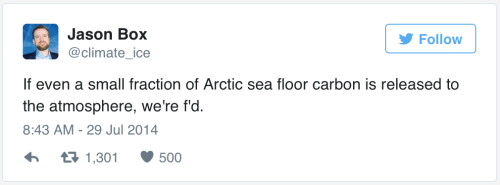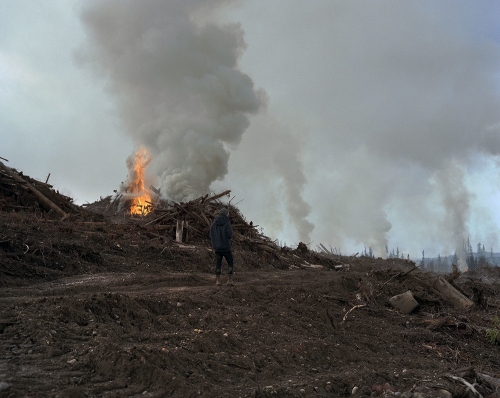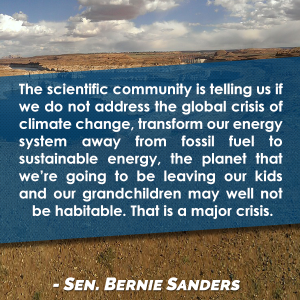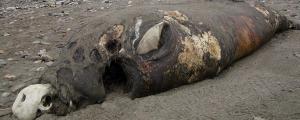An Editorial.
The Debate
Or Lack Thereof
The arctic is heating; there is no debate.
In December, the North Pole was warmer than Western Texas, Southern California, and parts of the Sahara.
Wait… what?
Headlines read: “MAN vs. EARTH“; “These People Are Covering the Alps With Blankets“; “A Massive Amount of Death Is Plaguing the World’s Oceans“. Articles scream “That’s absolutely terrifying and incredibly rare. To create temperatures warm enough to melt ice to exist in the dead of winter—some 50 or 60 degrees warmer than normal—is unthinkable.“
The conversation of Climate Change today is of paramount importance: “I would say that [the UN’s annual climate change conference] is going to decide a thousand years of future in the oceans,” Douglas J. McCauley, an ecologist at the University of California, Santa Barbara who recently authored a major study on the human-caused destruction of ocean fauna told VICE news.
Yet, whilst a “growing contingent within the scientific community argues that because of human influence on the air, water, and soil we are no longer living in the Holocene epoch, which began about 11,700 years ago with the end of the Ice Age, but are now in the Anthropocene — The Age of Humans”—per VICE news, some refuse to accept the glaring truth. Yes, Man has fucked the planet so badly that it’s entering a new epoch and many—funded by oil giants such as Exxon—refute the evidence.
Man is desperate, but without the collective actions of us all, we will not have a planet that is full of harmony—we must save our arctic, save our forests and save our future.
The Human Charge
And What We Can Do
The WWF attributes the death to a “network of interrelated human behaviors”—namely overfishing, aquafarming, island- and ocean-based tourism, pollution, climate change, and offshore drilling in the oceans (read more about offshore arctic drilling here). As all of these factors accelerate—largely due to an increased standard of living rather than new human needs—the unprecedented levels of carnage in our oceans will not cease to exist (“29 percent of the world’s fish stocks are classified as overfished and 61 percent as ‘fully exploited,’ meaning they have no ability to produce greater harvests”).
However, the oceans are not a lost hope: “‘If you stop taking the pieces out of these ocean civilizations, they can begin to rebuild themselves,’ he told VICE News. ‘It’s never going to regrow itself the way it was 50 years ago […] but we have to do what we can to stop the carnage and allow these systems the space to regrow.'”
“Marine species have declined by almost half over the last forty-five years, according to the World Wildlife Fund’s Living Planet Index, and leading marine scientists tell VICE News that the only hope of stopping mass death in the oceans is to radically and quickly transform human behavior.
[…]
Fish were the most threatened, in large part because of human overfishing: Over a third of fish consumed by humans measured by the Living Planet Index are under threat of extinction, with one family of tuna and mackerel falling 74 percent between 1970 and 2010.
Other animals that recorded massive and ongoing losses were sharks and rays, of which one in four species is threatened with extinction, and some species of turtles, which declined by 97 percent in the Eastern Pacific.
The mass death of larger animals is tied to the decimation of habitats that are critical to the ocean’s biosphere. The WWF also noted that coral reefs — which support 25 percent of all marine life — could go extinct by 2050, and global surface areas of seagrass and mangroves, which provide spawning grounds, nutrients, and shelter for many animals, have declined precipitously.”
Save The Arctic — a Greenpeace project — states, “If you want to change the world, start at the top” — so let’s look North:
“The Arctic Ocean is home to incredible wildlife, from majestic polar bears to blubbery walruses, mysterious narwhals and graceful seabirds. But the sea ice they depend on is vanishing at a terrifying speed.
Without ice to hunt, rest, and breed, the very survival of polar bears and other wildlife is under threat. Mother polar bears, weak and starving, have trouble reproducing. Their cubs must fight the odds to survive into adulthood.
Unless we make a global concentrated effort to prevent this, experts warn that polar bears could disappear completely from the Arctic in the next 100 years. Act now to protect their home,” the mission declares.
The Human Cost
Why We Care
“See, you can ignore [climate change], but the thing about truth is, it can be denied—not avoided. So I’m sorry future generations: I’m sorry our footprint became a sinkhole, and not a garden; I’m sorry that we paid so much attention to ISIS, and very little to how fast the ice is melting in the Arctic. […] We are not apart form nature, we are a part OF nature; and to betray nature is to betray us, to save nature is to save us.”
Dear future generations: sorry. Sorry that we watched as our arctic—yes, our arctic—literally melted away before our eyes. Sorry we ignored the warnings.
And now, there’s more:

“It’s especially worrying because the Arctic is warming faster than nearly anywhere else on Earth. Now, along with melting sea ice and thawing permafrost, we have to add to our list of ‘feedback loop’ concerns that warming Arctic oceans may be releasing fonts of methane. That is, the warmer the ocean gets, the more methane gets spewed out of those stores on the continental shelf, and the warmer the ocean gets, ad infinitum,” writes Brian Merchant, per VICE news.
“We’re on a trajectory to an unmanageable heating scenario, and we need to get off it,” he said. “We’re fucked at a certain point, right? It just becomes unmanageable. The climate dragon is being poked, and eventually the dragon becomes pissed off enough to trash the place,” said Box, who is currently a professor of glaciology at the Geological Survey of Denmark and Greenland, and has been studying the Arctic for decades.
“I may escape a lot of this,” Box said, “but my daughter might not. She’s 3 years old.”
Enough said.








